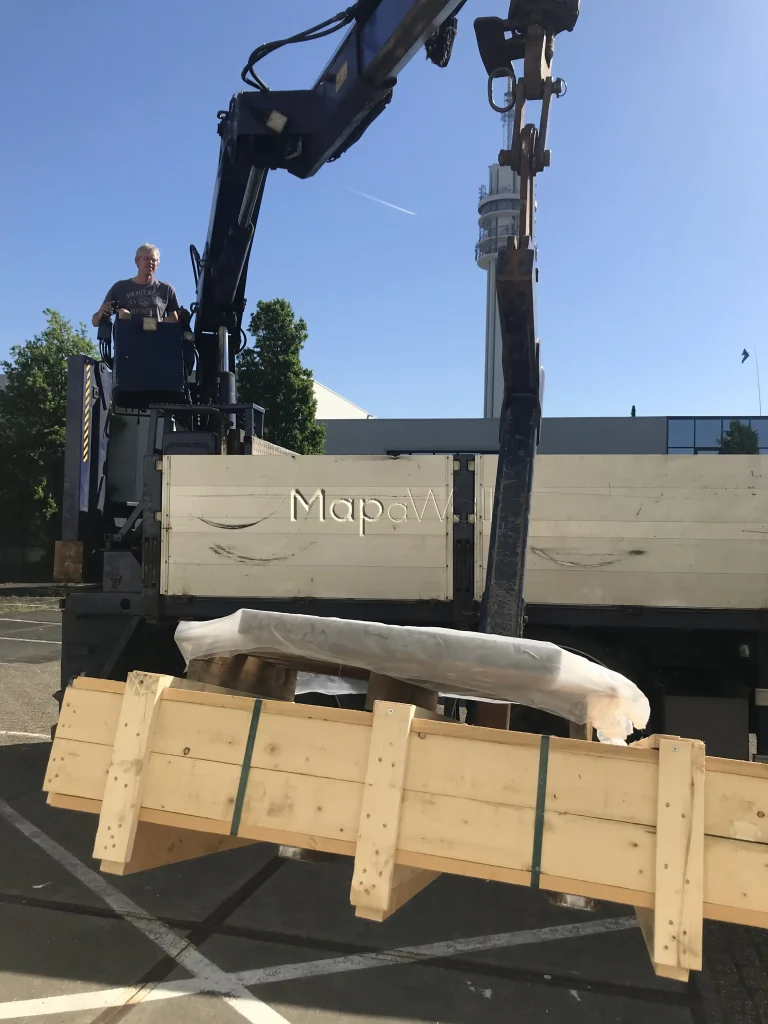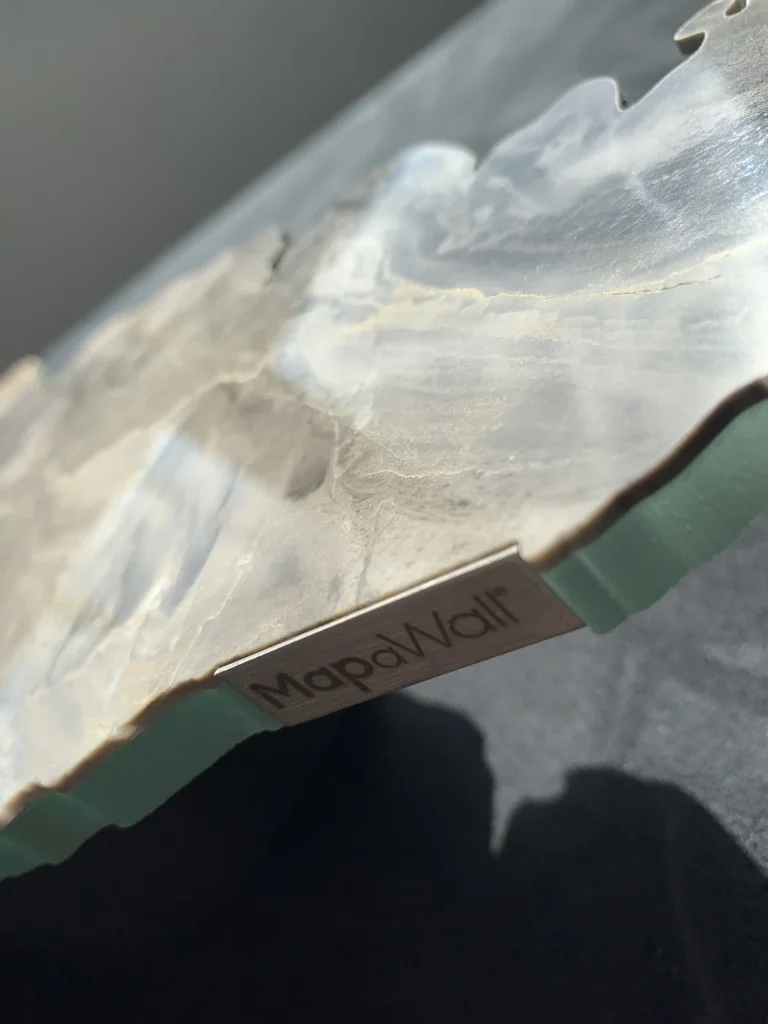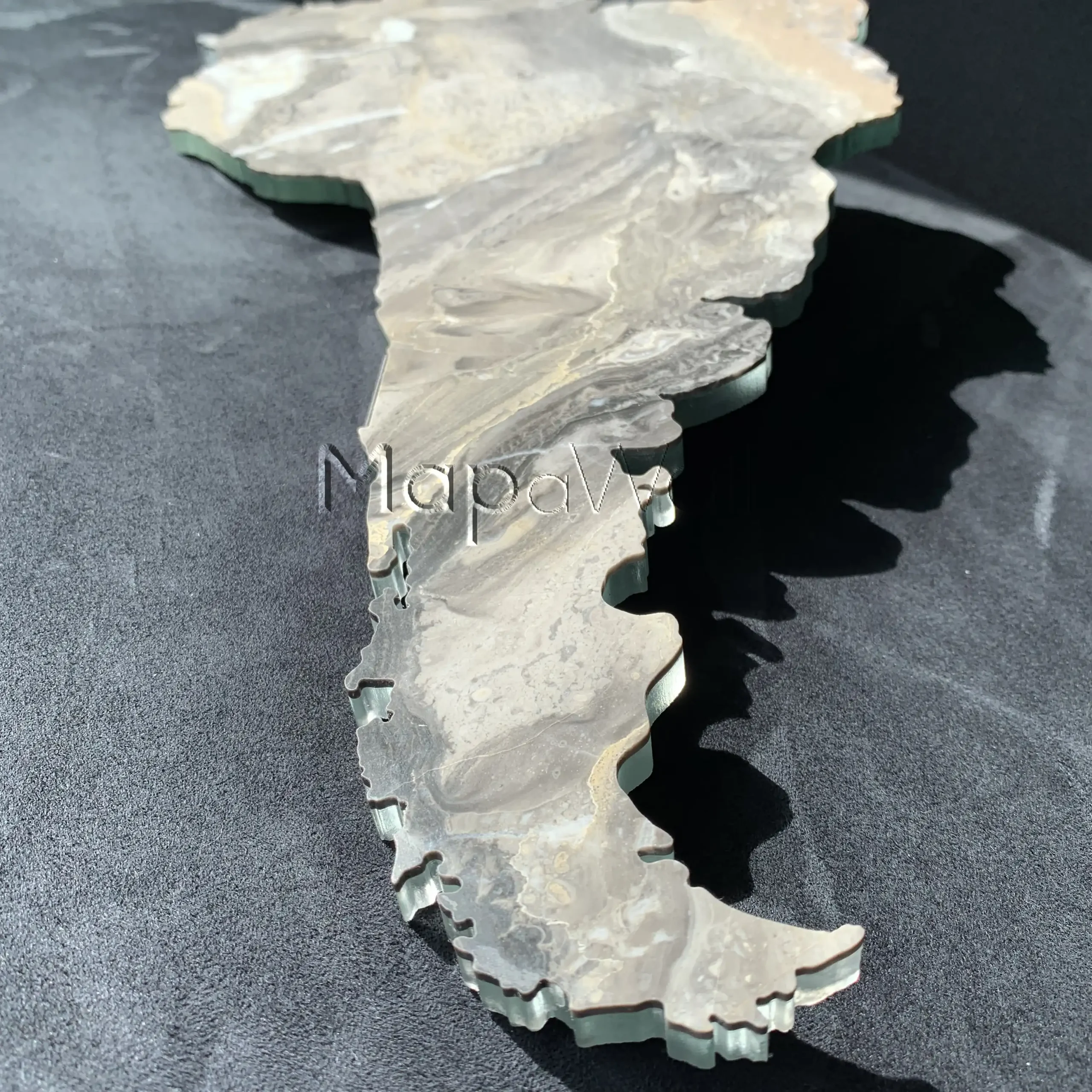In one of our earlier posts, you witnessed the creation of a world map crafted from a 2 cm (0.79 inch) thick slab of Grigio Orobico marble. This heavyweight champion was probably the most substantial world map ever made at this scale. However, due to its weight and the thickness of the stone, which posed significant challenges for transportation and installation, we found it necessary to make adjustments to the base design of the map.
When crafting a world map from any material, it's crucial to tailor the design to the specific map and choose an appropriate cutting technique. Most commonly, world maps, whether wooden or steel, are cut and engraved using laser technology. Wooden maps are typically crafted with a CO2 laser, while metal maps are cut by a fiber laser. Similarly, StoneCut world maps are often cut and engraved with a powerful CO2 laser. However, when dealing with a thick slab of genuine marble, neither CO2 nor fiber lasers suffice. Achieving the intricate precision required for detailed world maps necessitates the use of a water-jet. A water-jet is a CNC machine that operates similarly to a CNC router or laser but uses a high-pressure stream of water to cut through stone. The water-jet's strong cutting capabilities make it ideal for crafting world maps from large slabs of thick polished marble.
Some of you may already be familiar with the remarkable precision of laser cutting, capable of engraving with millimetre accuracy. However, the water-jet's beam is thicker and less precise, resulting in less detailed cutouts compared to laser-cut maps. This discrepancy in precision led to significant differences between the initial design and the technical drawings intended for maps made from other materials like wood and steel.
The fragility of the previous Grigio Orobico marble map posed several challenges during production and transportation, prompting the need for reinforced packing and careful handling. To ensure safe transport from Italy to our workshop in the Netherlands, extensive safety measures were made. Each continent and island is packed in styrofoam and housed in a specially designed wooden casing. Upon arrival, the wooden casing is lifted by crane near our workshop, where we finalise the product. Assembling a customised mounting kit, and preparing it for delivery to one of our clients.

Recognising the relative fragility of the marble pieces representing continents and islands, we chose to reinforce the entire marble slab with tempered glass. This added layer substantially increased strength and reduced the risk of breakage during transit and installation. In the close-up photo below, you can see how the marble layer is securely affixed to the tempered glass, with only a five millimetre thickness used for this topping. Not only did this reinforcement enhance durability, but it also significantly reduced the overall weight of the map, facilitating easier installation. And the best part of all. The luxurious outcome is just as good as the marble map from the first generation. If not surpasses.

Stay tuned for our next post, where we'll dig into another remarkable advantage of this production tweak. One that will blow your mind.
